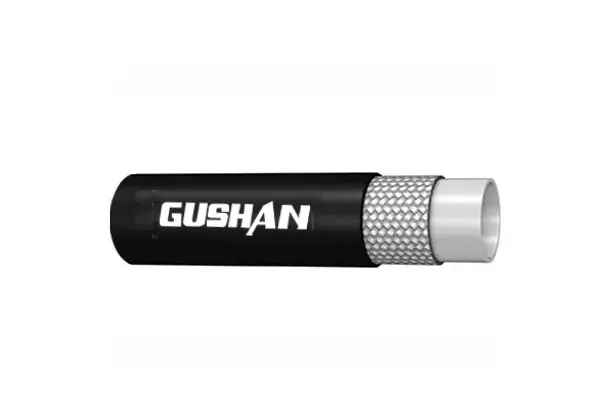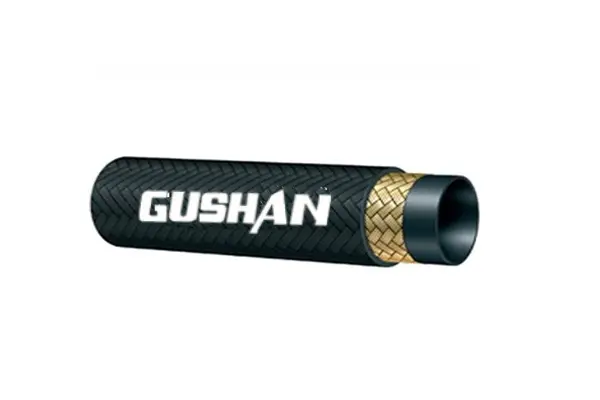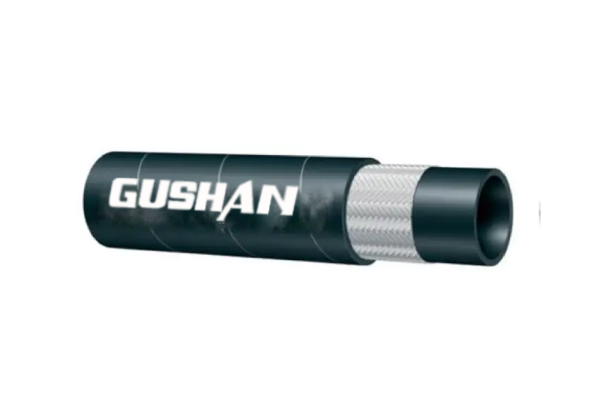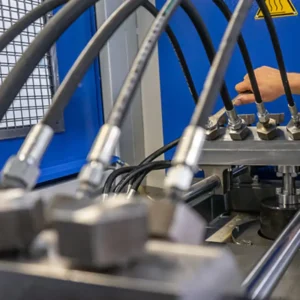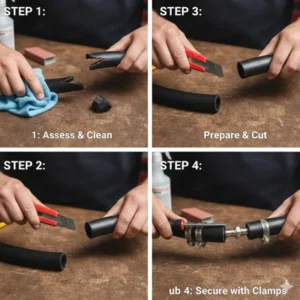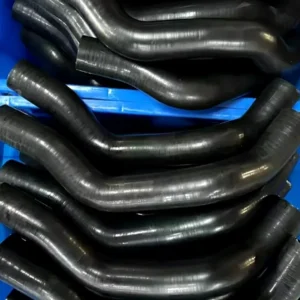Hydraulic systems are the backbone of countless industries, powering everything from heavy machinery to delicate medical equipment. Within these systems, hydraulic hose ends play a critical role. These components connect hoses to fittings, ensuring a secure and leak-free transfer of fluid under high pressure. The choice of hose end is crucial, as it directly impacts system performance, reliability, and safety.
This comprehensive guide will dive into the industry of hydraulic hose ends, covering various types, fittings, and selection criteria. We’ll explore the importance of proper installation and maintenance to prevent leaks, minimize downtime, and maximize the lifespan of your hydraulic system. Whether you’re a seasoned mechanic or simply curious about these essential components, this guide will provide valuable insights and practical knowledge.
What Are Hydraulic Hose Ends
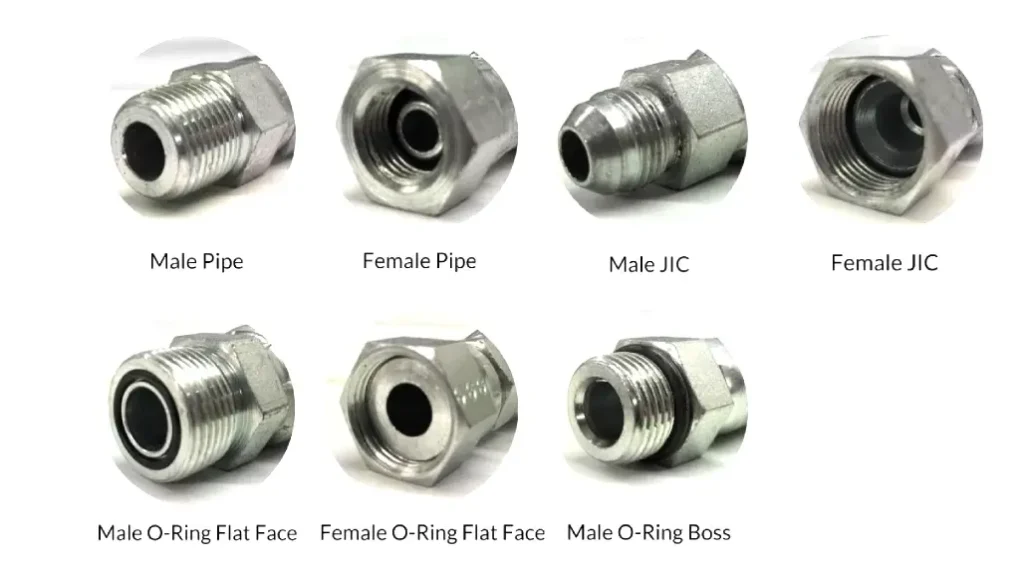
Hydraulic hose ends are specialized connectors that attach hydraulic hoses to other components within a hydraulic system. These components can include pumps, valves, cylinders, and other equipment. The primary function of hose ends is to create a secure and leak-free connection that can withstand the high pressures and demanding conditions typical of hydraulic systems.
Hose ends come in a wide variety of shapes, sizes, and materials, each designed for specific applications and operating environments. Common types include JIC (Joint Industrial Council) fittings, SAE (Society of Automotive Engineers) fittings, and BSP (British Standard Pipe) fittings. These fittings are typically made from materials like steel, stainless steel, and brass, chosen for their strength, durability, and corrosion resistance.
The correct selection and installation of hydraulic hose ends are critical for the proper functioning and safety of any hydraulic system. Improperly installed or incompatible fittings can lead to leaks, system failures, and even potential hazards.
Hydraulic Hose Ends Types
Hydraulic hose ends come in a variety of types, each designed for specific applications and operating conditions. Here are some of the most common:
1. JIC (Joint Industrial Council) Fittings:
- Features: These are widely used in North America, known for their 37-degree flared connection. They offer good sealing capabilities and are relatively easy to assemble and disassemble.
- Applications: Commonly found in mobile equipment, construction machinery, and agricultural applications.
2. SAE (Society of Automotive Engineers) Fittings:
- Features: This standard encompasses a broad range of fittings, including both 37-degree flared and ORFS (O-ring face seal) types. SAE fittings are known for their versatility and adaptability across various industries.
- Applications: Used extensively in automotive, aerospace, and industrial applications.
3. BSP (British Standard Pipe) Fittings:
- Features: These fittings are common in Europe and other parts of the world. They utilize parallel threads for connection, offering a reliable seal.
- Applications: Widely used in general industrial applications, including those involving high pressures and temperatures.
4. ORFS (O-ring Face Seal) Fittings:
- Features: These fittings utilize an O-ring to create a seal between the male and female connectors. They are known for their leak-proof performance and ability to withstand high pressures.
- Applications: Ideal for high-pressure applications, such as those found in heavy-duty construction and industrial machinery.
5. Metric Fittings:
- Features: These fittings adhere to metric standards for dimensions and thread sizes. They offer a standardized approach to hydraulic system design and maintenance.
- Applications: Commonly used in industrial applications worldwide where metric units are prevalent.
6. Swivel Fittings:
- Features: These fittings incorporate a swivel joint, allowing for flexibility and the ability to compensate for misalignment between components.
- Applications: Ideal for applications where movement or vibration may occur, such as those involving mobile equipment.
7. 45-Degree Flare Fittings:
- Features: These fittings utilize a 45-degree flare for sealing, offering a reliable connection in various applications.
- Applications: Commonly used in automotive and other applications where space constraints may be a factor.
Table of Common Hydraulic Hose End Types:
| Type | Features | Applications |
|---|---|---|
| JIC | 37-degree flared, common in North America | Mobile equipment, construction, agriculture |
| SAE | Wide variety, including 37-degree flared and ORFS | Automotive, aerospace, industrial |
| BSP | Parallel threads, common in Europe | General industrial, high-pressure applications |
| ORFS | O-ring face seal, high-pressure applications | Heavy-duty construction, industrial machinery |
| Metric | Metric dimensions and thread sizes | Industrial applications worldwide |
| Swivel | Incorporates a swivel joint for flexibility | Mobile equipment, applications with vibration |
| 45-Degree Flare | 45-degree flare for sealing | Automotive, space-constrained applications |
This table provides a general overview of common hydraulic hose end types. The specific choice of fittings will depend on factors such as the application requirements, operating pressures, and the type of hydraulic system.
3/8 Hydraulic Hose With Female Ends
A 3/8 hydraulic hose with female ends is a common component in hydraulic systems. The ‘3/8’ refers to the hose’s inside diameter, typically measured in inches.
Female ends, also known as female fittings or couplings, have internal threads that accept male connectors. This allows the hose to be connected to various components in the hydraulic system, such as pumps, valves, and cylinders.
These hoses are used in a wide range of applications, including construction equipment, agricultural machinery, and industrial machinery. They are often chosen for their versatility and ability to handle moderate pressures and flows.
How to Identify the Correct Hydraulic Hose Ends
Selecting the right hydraulic hose ends is crucial for the safe and efficient operation of any hydraulic system.
Here’s a breakdown of key factors to consider:
1. Determine Application Requirements:
- Pressure: What is the maximum operating pressure of the system?
- Temperature: Will the hose be exposed to extreme temperatures (high or low)?
- Fluid Compatibility: What type of fluid will be flowing through the hose (hydraulic oil, water, etc.)?
- Movement and Vibration: Will the hose be subjected to significant movement or vibration?
- Space Constraints: Are there any limitations on the size or orientation of the fittings?
2. Consider Hose Type and Size:
- Hose Diameter: Select the appropriate hose diameter based on the flow rate requirements of the system.
- Hose Material: Choose a hose material that is compatible with the fluid and can withstand the operating conditions.
3. Identify Fitting Type:
- Thread Type: Determine the thread type (e.g., JIC, SAE, BSP, metric) based on the system’s requirements and the available components.
- Fitting Style: Select the appropriate fitting style (e.g., straight, 45-degree elbow, 90-degree elbow, swivel) based on the system’s layout and space constraints.
- Sealing Method: Consider the sealing method (e.g., O-ring face seal, flared connection) based on the pressure requirements and the type of fluid.
4. Check for Compatibility:
- Hose and Fitting Compatibility: Ensure that the chosen hose and fittings are compatible with each other.
- System Compatibility: Verify that the selected fittings are compatible with the other components in the hydraulic system.
5. Consult with Experts:
If you are unsure about which hydraulic hose ends to choose, consult with a hydraulics specialist or a reputable supplier. They can provide expert guidance based on your specific application requirements.
By carefully considering these factors, you can select the correct hydraulic hose ends for your application, ensuring optimal performance, safety, and longevity of your hydraulic system.
Conclusion
In conclusion, understanding the intricacies of hydraulic hose ends is crucial for the safe and efficient operation of any hydraulic system. By carefully selecting the right components and following proper installation practices, you can minimize downtime, prevent costly failures, and ensure the longevity of your equipment.
Now that you have a strong foundation in hydraulic hose end knowledge, consider partnering with a trusted supplier like Gushan Rubber. We specialize in manufacturing high-quality hydraulic hoses and offer a wide range of end fittings to meet your specific application needs.
Contact us today for a free quote and experience the Gushan Rubber difference. Our team of experts is ready to assist you in selecting the optimal solutions for your hydraulic system and provide valuable guidance on all your fluid power requirements.


